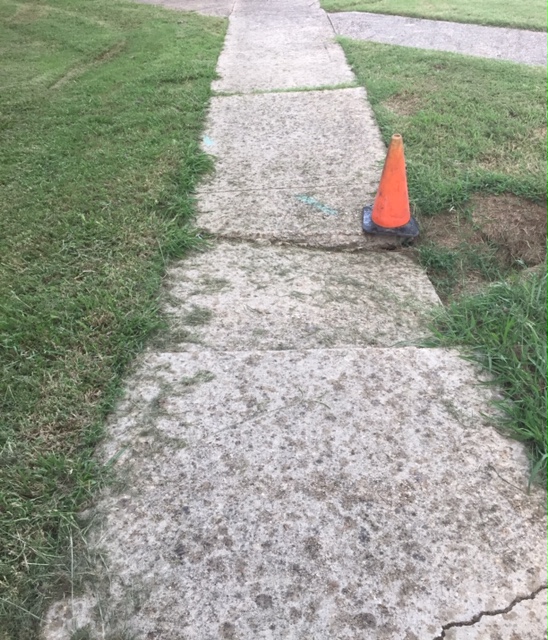Delta State University’s Precarious Sidewalks
The campus of Delta State University is beautiful and almost a century old. With age comes safety hazards, which are shown in the current state of the sidewalks.
The Dangerous Sidewalks
Campus buildings are linked together by a trail of sidewalks. The condition of these sidewalks varies. Some are smooth and pristine while cracks and other problems corrupt the rest of the sidewalks.
Savannah Conway, a biology and neurological science major, stated, “Some sidewalks have major cracks, like the ones by the pool.”
Dr. Brian Becker, an Associate Professor of Ancient and Medieval History, stated that: “The sidewalks behind Jobe Hall and the Arts Center can be rather treacherous. They are cracked, uneven, and in a way, the sidewalks just end…the pavement is unfinished.”
The fissures and divots that litter the pathways were caused by severe water damage. Due to the flat surface that Delta State lies on and the lack of drainage systems, the campus floods when there is a rainstorm. Water collects on the sidewalks which then submerges the sidewalk.
“The sidewalks by Kethley stay flooded even days later after it’s rained,” Bailey Simons, a psychology major, explained.
“The sidewalks are fine; they are just sinking into the ground. They are mostly sinking with minor cracks,” says Jordan Thompson, an art major.
The damaged sidewalks on campus pose dangers to students and faculty. The cracked and uneven pavement could cause someone to trip and injure themselves.
“There have been a few cases where I have almost tripped. Especially when it was raining,” explained Gage Yelverton, a junior Aviation Operations major.
“I know of students who have tripped and sprained their ankles. I heard that a girl tripped and broke her ankle,” says Dr. Becker.
How Should We Fix The Sidewalks?
Both the students and the faculty members of Delta State University have proposed ideas to repair the damaged sidewalks found on campus. If the university funds these projects, then refurbishing the walkways is off to a great start.
“We should raise the sidewalks. Then we would not have to worry about them sinking or cracking. Then we should try to fill in the cracks,” explained Savannah Conway.
To repair the damaged sidewalks Gage Yelverton says: “I would go to the worst spots first to fix them and then would fix the smaller spots. If I run out of money, then the worst spots will already be fixed.”
“I would find the places that are in the worst shape, uneven, broken, or cracked, and I would fix those first,” explained Assistant Professor Robin Acord.
In response to the terrible floods that submerge Delta State’s campus when it rains, Jordan Thompson stated, “I think a decent draining system could also help.”
Why It Is Difficult to Repair the Sidewalks
The process of repairing a sidewalk is not cheap. A large amount of money is spent on hiring a construction crew as well as paying for the materials needed to fix the pavement.
Alfred Freeny, a retired construction worker, explained that: “The length of the sidewalk would be measured in cubic yards. Concrete costs around $200 to $300 per cubic yard. After the concrete is purchased, it would need to be transported, which also costs money since you have to pay the driver. Once delivered, it would take time to repair the sidewalk. If demolition is involved, then it would cost more money to repair the sidewalk since the crew is destroying the sidewalk, constructing a new sidewalk, and then refurbishing the area around the sidewalk.”
It is important to address the broken sidewalks on campus because they are a safety hazard to the students and the staff members. The community of Delta State University needs to know of this danger so that those who can help the university’s campus will know what needs to be repaired.

Olivia Freeny is currently a sophomore from Brandon, Miss. She is an English Education major who is also working on personal writing projects outside of...



